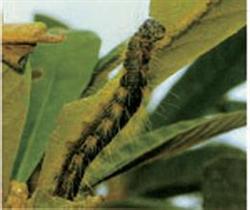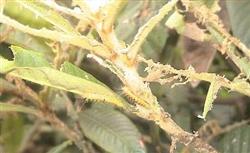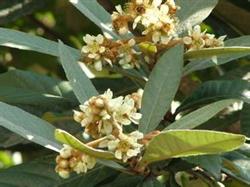How to strengthen the management of loquat in winter

Loquat blossoms in winter, the flowering period is as long as 3 Mel for 4 months, and the tree needs to consume a lot of nutrients. In order to ensure the high yield of loquat, the following winter management measures must be strengthened: first, applying winter fertilizer. When it is seen that the loquat has flowered in November, each tree should apply about 25 kg of rotten manure and 3 kg of superphosphate. Under the canopy, 8 radial trenches with a depth of about 15 cm, a length of 100 cm and a width of 20 cm were dug. Fertilizer was applied into the ditch and covered with soil. This can increase tree nutrition, enhance cold resistance, promote more strong flowers to increase fruit setting rate, and lay a good foundation for high yield in the following year. Second, thinning and cutting the ears of flowers. Loquat tree has the most flowering, long flowering period and high nutrient consumption, so it is necessary to prune part of the flower ear in time to reduce the nutrient consumption of the tree and promote the large fruit and good quality in the following year. But we should pay attention to it when all the flowers and ears of the tree are extracted. First cut the weak spikes on the crown and fruiting mother branch, and then cut off the lateral spikes at the top and base of the branched spikes and the spikes of diseases and insect pests, but keep 5 vigorous lateral ears among them. Third, cover the soil against the cold. Before the arrival of winter frost, each tree should cover its roots with burning soil or garbage fertilizer, pond mud, and field mud with a thickness of 10m / 15cm, and then cover the soil with grass to increase the soil temperature, protect the roots, and increase fertilizer, which is conducive to the tree's safe passage through the winter. Fourth, bundle leaves to protect flowers. When loquat blossoms, it is necessary to bundle up the leaves under the flower ear to cover the flower ear, or cover the flower ear with grass to prevent the flower ear from exposing in the cold, frost and cold rain, and protect the flower ear to bear more fruit, so as to achieve high yield.
- Prev

Timely control of loquat yellow caterpillar
Loquat yellow caterpillar adults are commonly known as "inverted butterflies". The larvae eat buds and tender leaves, and when rampant, they also endanger old leaves, tender stem barks, flowers and fruits, and only upper epidermis and veins remain in the injured leaves. The first instar larvae of the insect are clustered. The second year old began to disperse the harm, and the food intake increased greatly after the third year old. This insect is the most common and serious kind of loquat.
- Next

High yield and good pre-flowering Fertilizer for Loquat
The flowering period of loquat tree is as long as 3 months and blossoms from October to February next year. Generally speaking, the flowering stage of loquat tree is divided into three stages: the first flower blooms from October to November, the fruit is larger, the quality is good, but it is susceptible to cold; the second flower blooms from November to January of the following year, and the fruit quality is inferior to that of the head flower, but it has strong cold resistance and fruit setting rate.
Related
- Moge, come on! The staff of the peasant association in the producing area of cantaloupe were frightened when the crowd gathered.
- Causes and Solutions of low Fruit setting rate of Apple
- Symptoms and control measures of passion fruit virus disease
- Fruit growing lesson: how do apple orchards keep high yields?
- Can you build orchards in the mountains? What are the pros and cons?
- How to manage the coloring period of Crisson grape?
- This paper introduces the processing technology of two kinds of fig products.
- How much is a month for retired teachers in rural areas by 2020?
- How can strawberry planting increase sugar content? We should pay attention to management in many aspects.
- What are the cultivation techniques on how to improve the yield of golden fruit?

